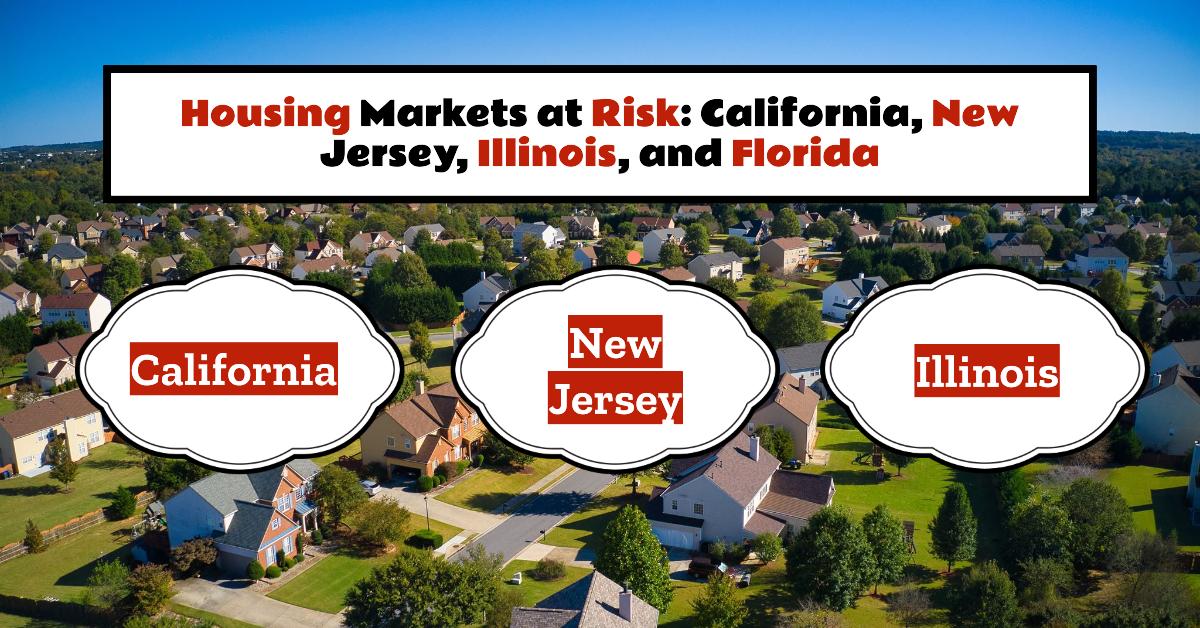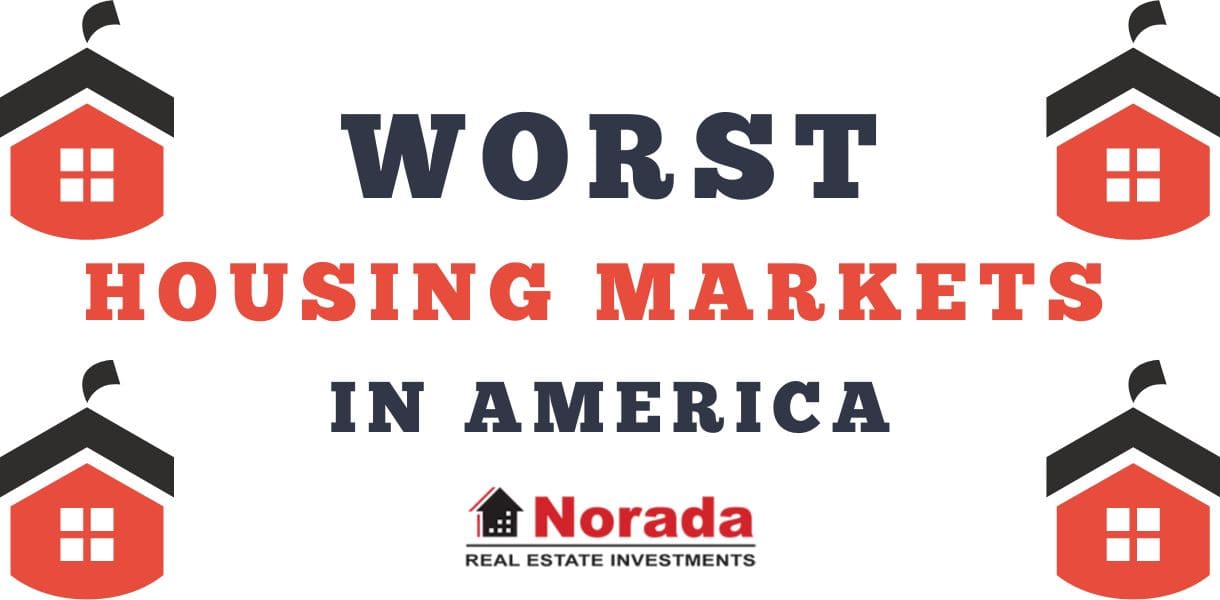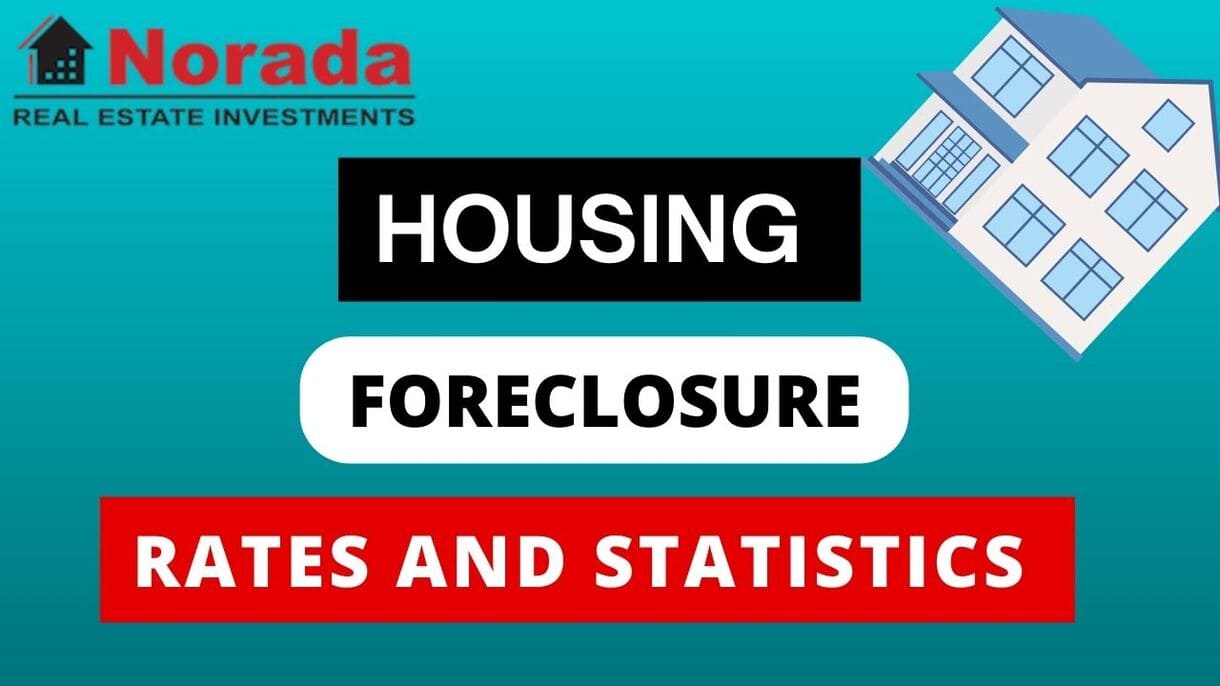Are you curious about which US housing markets are most vulnerable to a potential decline? Based on a recent report by ATTOM, a leading provider of property data, California, New Jersey, Illinois, and Florida are facing a higher risk of housing market declines due to factors like affordability, underwater mortgages, and unemployment.
While the overall national housing market remains robust, these areas exhibit specific characteristics that might make them more susceptible to downturns in the near future. Let's dive deeper into the specifics of this report and explore the factors contributing to these vulnerabilities.
US Housing Markets at Risk of Decline: Where Are the Most Vulnerable Areas?
In the third quarter of 2024, ATTOM released its Special Housing Market Impact Risk Report, providing a county-level analysis of housing market vulnerabilities across the US. This report uses a combination of key indicators, such as home affordability, equity, and foreclosure rates, to determine which areas are more or less prone to potential declines.
I found it really interesting how the report highlighted that the picture of which areas are most at risk has shifted somewhat compared to previous quarters. While California, New Jersey, and Illinois have consistently been flagged as areas of concern, Florida's inclusion in the ‘at-risk' category is more recent.
The methodology used in the report is quite comprehensive. They considered several factors including the percentage of homes with potential foreclosure actions, the number of homeowners with mortgage balances higher than the estimated value of their properties, the proportion of local wages needed for major homeownership expenses, and local unemployment rates.
Recommended Read:
The Most Vulnerable Housing Markets
Based on the report, certain metropolitan areas and specific counties are facing greater challenges. Let's take a closer look:
- Vulnerable Housing Markets Clustered Around Chicago, New York City, and Inland California: The report identified that 24 out of the 50 counties considered most vulnerable to housing market issues were located in or around New York City, Chicago, and inland California.
- Illinois: Counties like Cook, Kane, Kendall, McHenry, and Will around Chicago showed increased vulnerability.
- New York: Both Kings County (Brooklyn) and New York County (Manhattan) were among the most at-risk, along with suburban areas like Essex, Passaic, and Sussex in Northern New Jersey.
- California: Inland counties like Butte, Contra Costa, El Dorado, Humboldt, and Solano in northern California were flagged as vulnerable, along with Kern, Kings, Madera, Merced, San Joaquin, Stanislaus, Riverside, and San Bernardino counties in the central and southern parts of the state.
It was surprising to me how the report demonstrated that specific areas within these states are facing the most difficulty. For instance, certain inland counties in California have been more affected than the coastal areas.
Factors Contributing to Vulnerability
The ATTOM report identifies several underlying factors contributing to increased vulnerability in these housing markets. Let's examine them in detail:
1. Worsening Affordability:
- The report noted that in many of the most at-risk counties, homeownership costs (including mortgage payments, property taxes, and insurance) for a typical home were consuming a large portion of average wages.
- In 30 out of the 50 most vulnerable counties, these costs were exceeding 43% of average local wages, which is considered significantly unaffordable.
- Some of the highest percentages were found in areas like Kings County (Brooklyn) where homeowners needed over 100% of their average local wages to cover those costs, followed by Riverside County, CA at 70.2%, El Dorado County, CA at 66.3%, and Passaic County, NJ at 65.9%.
It makes sense that affordability issues would have a big impact on the housing market. If people can't afford to buy or maintain a home, it can lead to foreclosures and a decrease in demand.
2. Underwater Mortgages:
- Underwater mortgages occur when homeowners owe more on their mortgage than their property is currently worth.
- A concerning trend revealed in the report is that at least 6% of residential mortgages were underwater in 23 of the 50 most-at-risk counties in the third quarter of 2024.
- The national average for underwater mortgages was 5.5%.
- The counties with the highest underwater mortgage rates among the most vulnerable included St. Clair County, IL at 15%, Tangipahoa Parish, LA at 13.7%, Pinal County, AZ at 12.4%, Philadelphia County, PA at 11.9%, and Marion County, FL at 11%.
I've always seen underwater mortgages as a significant risk factor for housing markets. If a large number of homeowners are underwater, they might be more likely to default on their mortgages, leading to foreclosures and downward pressure on home prices.
3. Foreclosure Activity:
- In 35 of the 50 most vulnerable counties, more than one in every 1,000 residential properties faced a foreclosure action in the third quarter of 2024.
- The nationwide average was one in 1,618 homes.
- Some counties experienced significantly higher foreclosure rates, including Charlotte County, FL (one in 449), Osceola County, FL (one in 473), Dorchester County, SC (one in 509), Cumberland County, NJ (one in 571), and Warren County, NJ (one in 574).
4. Unemployment Rates:
- Unemployment played a role in the vulnerability of many areas as well.
- 34 of the 50 most at-risk counties had unemployment rates of at least 5% in August 2024, compared to the national average of 4.2%.
- Merced County, CA had the highest unemployment rate at 9.1%, followed by Kern County, CA (8.7%), Kings County, CA (8.2%), Cumberland County, NJ (7.7%), and Madera County, CA (7.4%).
I think it's pretty clear that unemployment has a significant negative impact on the housing market. When people lose their jobs, they often struggle to keep up with mortgage payments, which can lead to foreclosure and a decline in home values.
The Least Vulnerable Housing Markets
In contrast to the vulnerable areas, the report identified several regions that are less likely to experience significant housing market declines. These areas are mainly concentrated in the South and the Midwest.
- South: Twenty-two of the 50 least vulnerable counties were in the South. Tennessee had the largest concentration of these counties, including those in the Nashville, Knoxville, and Chattanooga metro areas.
- Midwest: Thirteen of the 50 least-vulnerable counties were in the Midwest, with Wisconsin having seven, including those in the Green Bay, Madison, and Oshkosh areas.
- Northeast: Eleven of the 50 counties were located in the Northeast.
- West: Only four of the 50 counties were located in the West.
Factors Contributing to Resilience
The report also sheds light on the factors contributing to the resilience of the least vulnerable housing markets.
1. Better Affordability:
- In contrast to the most vulnerable markets, homeownership costs in the least vulnerable markets were considered seriously unaffordable in only 17 of the 50 counties.
- Potter County, TX, had the lowest percentage of wages needed for homeownership at 19.1%, followed by Oswego County, NY at 21.8%, Sullivan County, TN at 25.9%, Shawnee County, KS at 26.5%, and Madison County, AL at 26.9%.
2. Lower Underwater Mortgages:
- Only one of the 50 least-at-risk counties had more than 6% of residential mortgages underwater.
- The counties with the lowest underwater mortgage rates included Chittenden County, VT (0.8%), Loudoun County, VA (1.6%), Rockingham County, NH (1.9%), Henrico County, VA (2%), and Hillsborough County, NH (2%).
3. Low Foreclosure Rates:
- None of the least-vulnerable counties had more than one foreclosure action per 1,000 residential properties.
- Yellowstone County, MT, had the lowest foreclosure rate, with only one in 72,252 homes facing foreclosure. Other counties with very low rates included Missoula County, MT, Berkeley County, WV, Medina County, OH, and Chittenden County, VT.
4. Low Unemployment:
- 48 of the 50 least-vulnerable counties had unemployment rates lower than the national average of 4.2%.
- Dane County, WI, had the lowest unemployment rate at 2.1%, followed by Chittenden County, VT (2.1%), La Crosse County, WI (2.2%), Outagamie County, WI (2.3%), and Cumberland County, ME (2.3%).
Implications for Homebuyers and Investors
The ATTOM report provides valuable insights for both homebuyers and investors looking to navigate the current housing market.
- Homebuyers in the most vulnerable areas might want to consider the affordability challenges and potential for future market declines before making a major purchase.
- Investors might want to focus on markets with stronger fundamentals and lower risk profiles, particularly those in the South and Midwest.
Furthermore, it's crucial to remember that this report spotlights areas that appear to be more or less vulnerable to changes in market conditions. It's not a prediction that any specific area is guaranteed to experience a downturn or remain immune from problems.
I've always emphasized the importance of doing your due diligence when making any real estate decisions. This report can serve as a valuable starting point for your research, but it's vital to consider local market conditions, economic trends, and other factors before making any major investment decisions.
Conclusion
The US housing market is currently in a dynamic phase, with varying degrees of vulnerability across different regions. Based on the ATTOM report, housing markets in California, New Jersey, Illinois, and Florida appear to be facing higher risks due to factors like affordability, underwater mortgages, foreclosures, and unemployment.
Conversely, areas in the South and Midwest seem to be exhibiting greater resilience. While the report offers a helpful snapshot of current trends, it's essential for both homebuyers and investors to conduct thorough research and consider the specific circumstances of individual markets before making significant real estate decisions.
Related Articles:
- 3 BIG Cities Facing High Housing BUBBLE Risk: Crash Alert?
- Why a 2008-Style Housing Market Crash is Unlikely in 2025?
- Housing Market Predictions for Next Year: Prices to Rise by 4.4%
- Housing Market Crash: Expert Says Market is Ready to Pop
- Housing Market Crash 2008 Explained: Causes and Effects
- Will the Housing Market Crash in 2025?
- Housing Market Crash 2024: When Will it Crash Again?
- Here's Why Housing Market Crash Predictions Are Overblown!
- Will the Housing Market Crash: Top Cities Where Prices Are Soaring
- If The Housing Market Crashes What Happens To Interest Rates?




